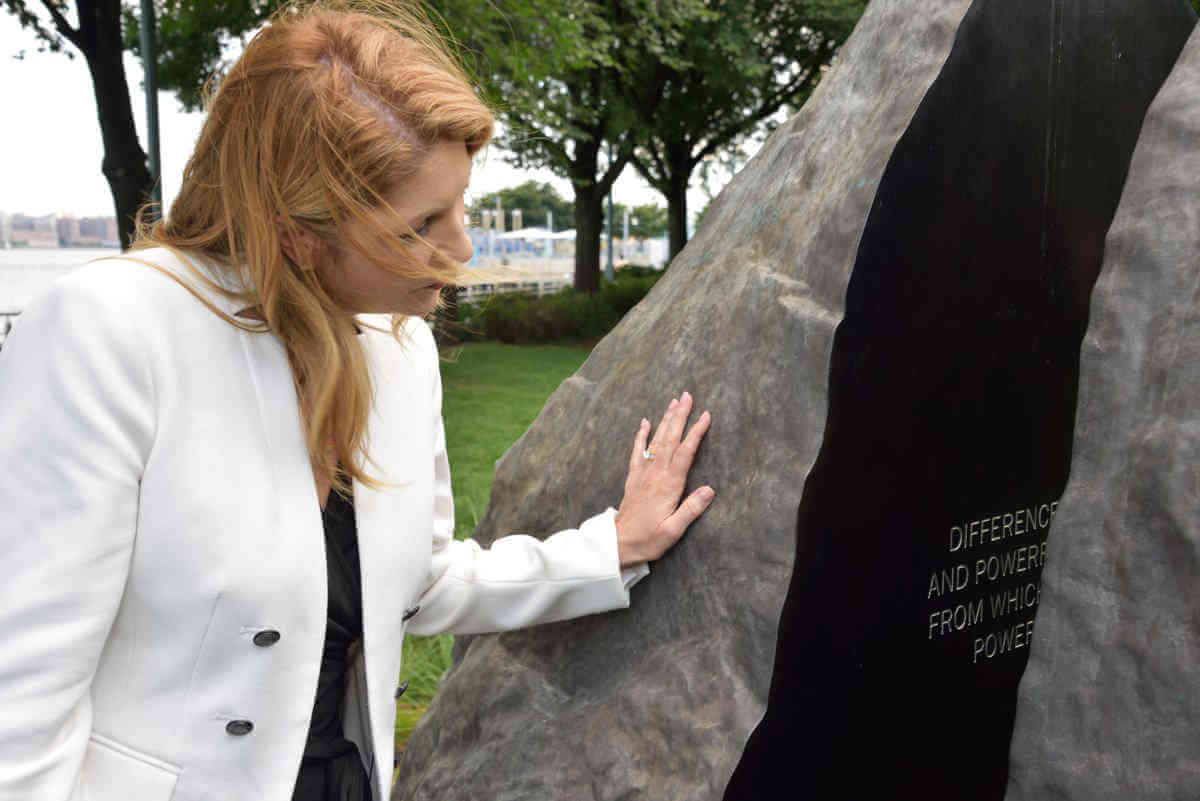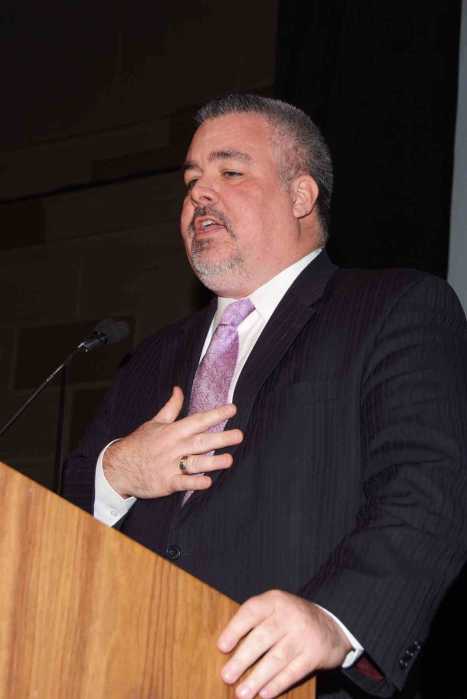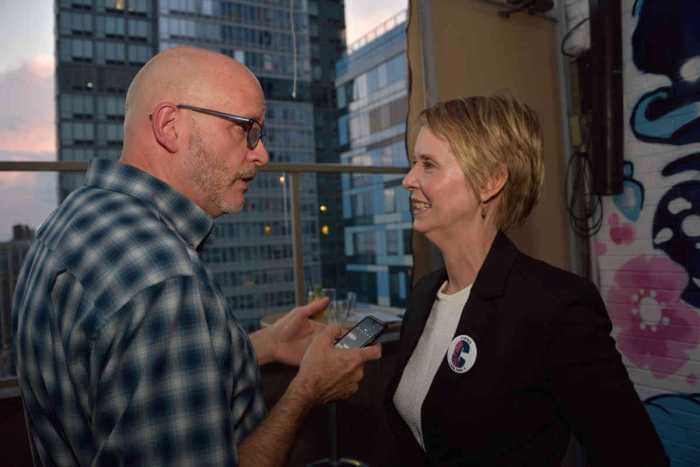On a beautiful recent mid-summer morning, Hudson River Park’s LGBT Memorial — which pays homage to victims of hate violence against the community, and to those lost and injured in the June 2016 shooting spree at Orlando’s Pulse Nightclub, in particular — played host to the onePULSE Foundation itself, the non-profit established by the club’s owners to honor the tragedy’s victims, support the survivors, and educate the public about what happened there two years ago.
On July 20, a group that included the Memorial’s designer, Anthony Goicolea, State Parks Commissioner Rose Harvey, Elizabeth Martin, the department’s project manager, Alphonso David, counsel to Governor Andrew Cuomo, and David Contreras Turley, the governor’s director of constituency affairs, welcomed Barbara Poma, who founded and leads the Foundation and was the nightclub’s owner since its launch in 2004. Poma was joined by Hilary Lewis, who sits on her board of trustees and is the curator and creative director of The Glass House, an architectural landmark of 49 acres in New Canaan, Connecticut, built by Philip Johnson, the late gay architect, between 1949 and 1995.
Harvey explained that when Cuomo announced plans for the Memorial, just two weeks after the Orlando killings, a chief consideration was that it be located with a view of the Statue of Liberty. Allowing artists answering the request for proposals to know that it would be situated in the park near West 12th Street, she said, enabled them to make fully contexualized proposals.
A native of Georgia, Goicolea recalled that when he first came to New York he became familiar with the park — “long an outdoor sanctuary for the LGBTQ community” — and sees it in many ways as a parallel to “the way a lot of nightclubs work.” The Memorial, in his view, was necessary to acknowledge the devastation of “see[ing] a space like that invaded and to be made to be feel vulnerable there.”
The circular arrangement of large bronze boulders, he explained, was intended to convey a “cove” or “safe harbor” just off the river. Whether in African megaliths, at Stonehenge, at Native American burial mounds, or just around campfires, he noted, circular spaces convey a sense of community.

“If more than two people are within the site, they automatically form an impromptu community and there’s a dialogue between them, whether it’s verbal or in their shared presence,” Goicolea said.
And it was important, he said, that the site not be “precious”; the stones are meant to be sat on and they invite viewer participation.
He added, “I wanted there to be a sense of perpetual revelation.” The stones appear to be granite but in fact are cast in bronze, “cementing the memory,” Goicolea said.
The glass that bisects six of the nine stones, he said, are intended to add a lightness, with refracted rainbows visible on the grass at certain times of day. But in uniting the boulders, he added, the glass, often seen as a fragile element, becomes a symbol of strength. His overall goal, he said, was to straddle the lines between solemnity and lightheartedness and between past and future.
Listening to Goicolea talk about his design, Poma said that she has learned that narrative is key to the success of memorials. A survey conducted by onePULSE found that the words most often mentioned as important for the memorial the Foundation is planning were love, hope, unity, strength, courage, and acceptance. In contrast, she said, the 9/11 Memorial and Museum speak to loss and solitude.

Goicolea responded that his design aimed to “funnel” people into the site and provide elements of discovery.
“There is this shifting dialogue that happens,” he said. “It makes you stay longer in a sense. It’s not handed to you. To me, the most successful memorials operate that way — the viewer has a role in interpreting it.”
In Orlando, the Pulse club — which has been unoccupied since the tragedy — originally became an impromptu memorial site, with heartrending DIY tributes left around a fence erected to close off the building. Since then, a temporary memorial has made the site more park-like, Poma said, and the Foundation just launched an ideas generator phase, which closes August 31, aimed at informing a request for design proposals to go out late this year or in January 2019.
Poma has reached out broadly for input, with her “Ambassadors Council” including representatives from the 9/11 Memorial and Museum and the Oklahoma City Memorial and Museum, as well as Judy Shepard, who launched the Matthew Shepard Foundation named for her murdered gay son.
The onePULSE Foundation is currently engaged in a three-year, $35 million capital campaign to fund not only the memorial, but an educational museum, scholarships in honor of the 49 people killed at Pulse, and ongoing care for survivors and first responders with long term needs.

To learn more about onePULSE, its ideas generator effort, and its capital campaign, visit onepulsefoundation.org.



































